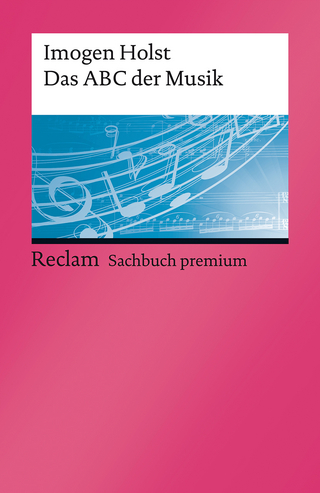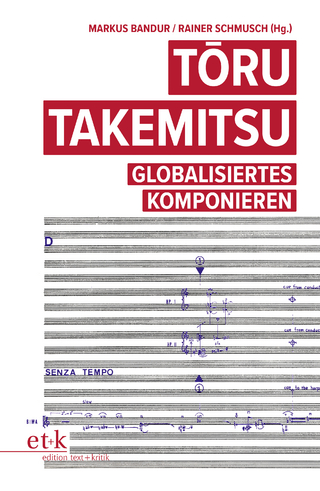
Chord Transformations in Higher-Dimensional Networks
Chapman & Hall/CRC (Verlag)
978-1-032-98290-8 (ISBN)
- Noch nicht erschienen (ca. Juni 2025)
- Versandkostenfrei innerhalb Deutschlands
- Auch auf Rechnung
- Verfügbarkeit in der Filiale vor Ort prüfen
- Artikel merken
Chord Transformations in Higher Dimenional Networks proposes an in-depth formal framework for generalized Tonnetze. It takes an algebraic approach and studies systems of k-chords in n-TET scales derived from a given k-mode (array of step intervals) through mode permutations and chord root translations, by combining key ideas of the neo-Riemannian Tonnetz theories with serial approaches to chordal structures. In particular, it provides the generalization of the neo-Riemannian P, R, L transformations via the notion of ‘drift’ operator, which is the main novelty of the approach. At the same time, the book is thorough in building the formal framework covering many moments and details, with special attention to trichords and tetrachods, which allow the geometric visualization of their structure helping to understand the more abstract transformations in higher-dimensional networks.
Features
• Chord transformations are explained from a new approach, by considering the chord as a two-component entity (root and mode), which is simpler than that of the neo-Riemannian theory
• The chords transformations presented can be easily converted to computational algorithms to deal with higher-dimensional Tonnetze
• Presents the study of chords with a scope that goes from scratch up to higher levels, about to develop research works.
Rafael Cubarsi, mathematician and physicist by training, received his PhD from the Astronomy Department of the Universitat de Barcelona in 1988 with a dissertation on Chandrasekhar Stellar Systems. He developed and conducted research at the Universitat Aut`onoma de Barcelona and Universitat Polit`ectica de Catalunya, where he used to teach, and has more than 70 published papers in peer-reviewed journals to his credit. His research focused on the fields of Astronomy & Astrophysics and Mathematical Biology. Recently his interest is centered on Mathematical Theory of Music.
Preface Author Bios Chapter 1 Introduction 1.1 Tones and notes 1.2 Scale examples 1.3 Equal temperament scales 1.4 Advantages of equal-temperament 1.5 Tone network 1.6 Chord network 1.7 Algebra of chords Chapter 2 Modes and chords 2.1 Mode 2.2 Directed chord and chord 2.3 Reduction of generalized modes 2.4 Submodes and supermodes 2.5 Complementary modes 2.6 Mode shifts and directed chord rotations 2.7 Number of chords and modes 2.8 Number of mode classes 2.9 Counting chords and modes Chapter 3 Subchords 3.1 Uniqueness of chords 3.2 Inverted modes 3.3 Relative inverted chords 3.4 Inverted chords 3.5 Structure of chords 3.6 Invariant subchords 3.7 Symmetric modes 3.8 Trichord examples 3.9 Trichords sharing two notes Chapter 4 Trichords 4.1 Chord extension [A,B,C] 4.2 Extension with a new chord 4.3 Tonnetz example 4.4 Chord extension [A,B,A] 4.5 Chord extension [A,2A,A] 4.6 Tonal cell [A,B,C] 4.6.1 Simplified diagram 4.7 Chord cell 4.8 Tonal cells [A,B,A] and [A,2A,A] 4.9 Major and minor chords in a 12-TET scale Chapter 5 Higher-dimensional chords 5.1 Higher-dimensional tone network 5.2 Modular structure 5.3 Distance on the Tonnetz 5.4 Non-degenerate Tonnetz 5.5 Generalized tonal cell 5.6 Generalized Tonnetz 5.7 Generalized chord network 5.8 Chord cell facets 5.9 Tetrachords Chapter 6 Operations on the root 6.1 Translations and inversions on directed chords 6.2 Translations on chords 6.3 Dependent translations 6.4 Prograde translations by mode intervals 6.5 Retrograde translations by mode intervals Chapter 7 Operations on the mode 7.1 Positive and negative inversions 7.2 Retrogradation and shifts 7.3 Mode intervals notation 7.4 Properties 7.5 Neighbor chords 7.6 Operating rules for transpositions 7.7 Translations by mode intervals 7.8 Relationships involving shifts and translations Chapter 8 Chord transformations 8.1 Operations on root and mode 8.2 Inversion of chords 8.3 Inversion and mirror by x 8.4 Properties 8.5 Rotations 8.6 Drifts along edges 8.7 Simple circuits 8.8 Shortcut circuits Chapter 9 Chord network 9.1 Some families of chords 9.2 Referring a chord to different cells 9.3 Co-cycles, co-cells, and congruent cells 9.4 Dependent operations on chords 9.5 Single translations 9.6 Translations towards one cell 9.7 Translations towards different cells 9.8 Honeycomb of trichords Bibliography Index
| Erscheint lt. Verlag | 26.6.2025 |
|---|---|
| Zusatzinfo | 1 Tables, color; 6 Tables, black and white; 17 Line drawings, color; 7 Line drawings, black and white; 17 Illustrations, color; 7 Illustrations, black and white |
| Sprache | englisch |
| Maße | 156 x 234 mm |
| Themenwelt | Kunst / Musik / Theater ► Musik ► Musiktheorie / Musiklehre |
| Mathematik / Informatik ► Mathematik ► Algebra | |
| Mathematik / Informatik ► Mathematik ► Angewandte Mathematik | |
| ISBN-10 | 1-032-98290-X / 103298290X |
| ISBN-13 | 978-1-032-98290-8 / 9781032982908 |
| Zustand | Neuware |
| Informationen gemäß Produktsicherheitsverordnung (GPSR) | |
| Haben Sie eine Frage zum Produkt? |
aus dem Bereich


